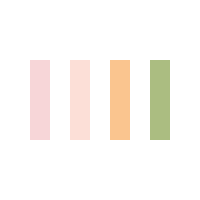

UPDATE 17-MAY-2024.
New buildings approval data for 2024 Q1 added.
Check out where we have lots of new housing supply coming soon:
HOUSES/
UNITS/
TOWNHOUSES
Rankings for top oversupply suburbs updated as well. (fox example: HOUSES)
UPDATE 16-MAY-2024.
Updated map layers describing
owner occupied area,
income,
and
social housing.
UPDATE 26-APR-2024.
Data update! Sales/Prices/Rents/Yields for 2023-Q4 added.
PLEASE MAKE SURE TO FULLY REFRESH THIS PAGE TO RELOAD THE NEW DATA (Ctrl+F5 for Windows or Command+R for Mac)
HEATMAPS.COM.AU is the online application that uses heat maps to visualise real estate prices and related data in Australia. This is a free tool for australian investment property research.
We source data from various government and other sources. See list of sources at the bottom of the page.
A collection of map layers and charts describing median house/unit price and growth by suburb and postcode. These layers are designed to reveal high growth areas, best suburbs to invest in 2022 for your analysis. More expensive suburbs will be coloured in red while the more affordable will be in green. Click on the map and look at charts and numbers.
Data is visualised on Postcode level and Statistical Area. The Statistical Area (1) normally have a population of between 200 and 800 people with an average population size of approximately 400 people.
The growth layer of the map visualises median price change year-on-year and quarter-on-quarter basis. We calculate absolute growth in dollars and relative change in percent. For example, if last year median price was $1.000.000 and this year it is $1.100.000 then the Growth ($) is $100.000 and Growth (%) is 10%. Growth stats are not available on Statistical Area level due to a very small number of transactions.
This layer visualises number of recently approved development applications (DAs) from local councils. Supply and demand define the price and the perspective. A higher number of recent development applications might indicate an increased supply on the local market. Hover over or click on the map to see the exact number and $ value of the new houses/units/townhouses constructed in the area. If you want to avoid investing into the area with oversupply of houses/units - research this layer of the map.
Australian Bureau of Statistics (OCT 2023) Report: 'Building Approvals by SA2 and above' [customised extract] accessed 20 OCT 2023.
Gross Yield is the key indicator in property investment. The formula is simple: divide annual rent by the value of the property.
Yield is not a comprehensive indicator of a good investment property. It doesn't take into account property price growth and equity accumulation. Many 'blue-chip' locations have low yield, but demonstrate exceptional value growth.
One of the strategies is to try to pick both: high yield AND high growth locations.
There is also a Net Yield indicator which is more accurate and considers many more components like expenses and fees. We don't have enough data to calculate Net Yield on either postcode or national levels.
Naturally, people prefer to buy/rent a house in a safe area. We included aggregated crime heat map to visualise safest and high-crime postcodes. Only property-related crime types were selected (Incidents of Malicious damage to property from January 2019 to December 2020)
© State of New South Wales (Department of Communities and Justice)
Some investors are choosing areas where dwellings are predominantly occupied by owners rather than renters. This layer will describe how many owners and renters are living there. Covers all states.
ATTRIBUTION: © Australian Bureau of Statistics (MAY 2024) CENSUS 2021. Table G33. Columns: O_OR_Total, O_MTG_Total, R_Tot_Total
This layer of the heat map visualises average annual income per taxpayer in 2017/18 tax year according to ATO. Higher income might indicate 'blue chip' locations in NSW.
© Commonwealth of Australia (Geoscience Australia) 2019.
Rent prices helps to understand rental market in the area. We show median/average rent price, how many rental agreements were secured in the postcode, bedroom count, type (house/unit/townhouse) and timeline for houses, units and townhouses.
Our privacy policy is available here.
NSW Government releases property sales data for public on weekly basis. We use this data to build heat maps for NSW. Full data is available: here
NSW Property Sales Data: © Updated 22-AUG-2022. Crown in right of NSW through the Valuer General 2022
Rent data NSW: © State of New South Wales (Department of Communities and Justice) Source Accessed 22.08.2022
Rent data TAS: © Department of Justice (Tasmania) Source Accessed 22.08.2022
Rent data QLD: © The State of Queensland Residential Tenancies Authority Source Accessed 22.08.2022
NSW © State Government of NSW and Department of Planning, Industry and Environment 2014. SOURCE
VIC © State of Victoria (Department of Environment, Land, Water and Planning) SOURCE (Only BH and MRS layers)
QLD © State of Queensland (Department of Resources) 2021 SOURCE
SA © Attorney-General's Department SOURCE
WA © SLIP / LANDGATE - Property and Planning Public Service SOURCE only the following layers/regions: Albany, York, Dandaragan, Geraldton, Busselton, Greater Bunbury, Augusta-Margaret River, Perth and Peel. Only residential polygons.
ACT © ACT Government SOURCE Layer: Overlay Zones / FUA
TAS © the LIST State of Tasmania SOURCE
For most families it is important to live close to a good school. This is why we included this layer into the application. Each coloured circle on the heat map is a school. Green colour indicates a better performing school while red colour means underperforming. Based on results of NAPLAN tests for NSW primary and secondary schools released by the Federal Government.
Social housing is secure and affordable rental housing for people on low incomes with housing needs. It includes public, community and Aboriginal housing. This layer covers the whole of Australia. You can see where all the social housing is located, how many residents are registered there and what is their share of the overall population in the area. The data is extracted from the Census 2016 provided by the ABS. Table: 2016Census_G33_AUS_SA1. Attribute: R_ST_h_auth_Total and Total_Total.